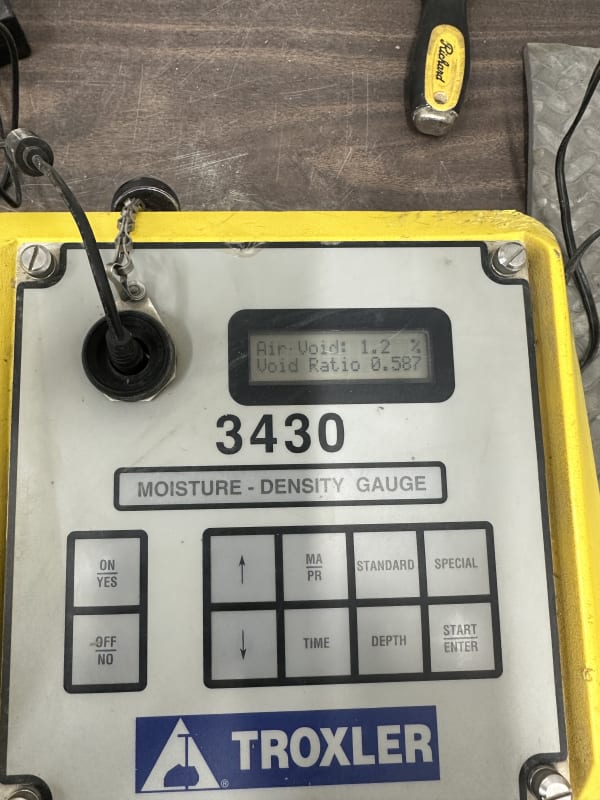The gauge will give a reading on the bulk density, moisture content (and dry density). The gauge should be calibrated against the soil, so the readings can be corrected.
The results will give you the dry density and moisture content can then be used to calculate air void content, for which you would also need to know the particle density.
Adopting the moisture content as a percentage, of say, 15%, a dry density of 1.65 Mg/m³ and a particle density of 2.65 Mg/m³, the calculation would be:
The air void content = {1.00m³ -(dry density/particle density)-(dry density x (moisture content / 100))} x 100(%)
Air void = {1.00m³ -(1.65/2.65)-(1.65x(15/100))} x 100(%)
Air void = {1.00m³ - 0.623 m³ - 0.248 m³} = 0.130m³ x 100(%) = 13.0%

